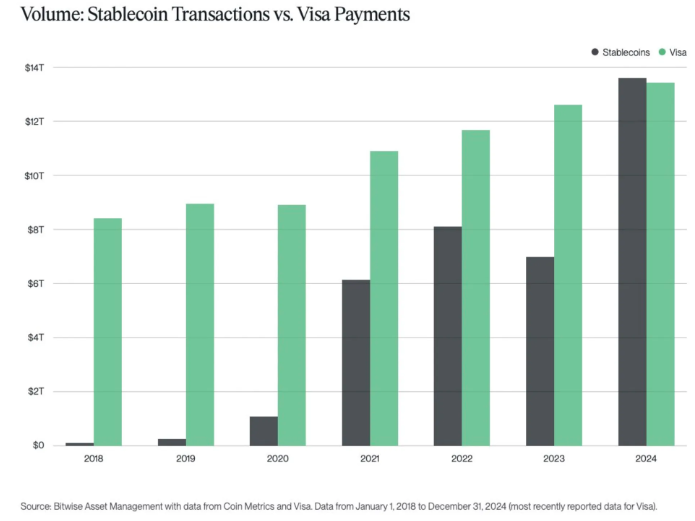Author: Tony
Translated by: TechFlow
Convergence and Divergence: US-China Relations, CeDeFi, and De-dollarization
[The rest of the translation follows the same professional approach, maintaining the original structure and translating all text to English while preserving the specified technical terms and names.]
CeFi Institutions Cross-Provide Traditional Financial and Crypto Products
Besides allowing global liquidity to be settled through USD, we also see CeFi platforms vertically expanding into cryptocurrencies, and vice versa:
Kraken acquired Ninja Trading to expand its products to traditional financial assets, ultimately allowing cross-margin between traditional financial and crypto trading.
In China, major brokerages like Tiger Securities and Futu Securities (often referred to as China's Robinhood) have started accepting USDT, ETH, and BTC deposits.
Robinhood strategically positioned cryptocurrencies as a core growth priority, planning to launch tokenized stocks and stablecoins.
With the upcoming Market Structure Act bringing more regulatory clarity, horizontal expansion of products across cryptocurrencies and traditional finance will become increasingly important.
DeFi Protocols Connect Crypto and Traditional Financial Yields
Meanwhile, we also see DeFi protocols leveraging competitive crypto native yields to attract traditional financial/off-chain funds, and allow traditional financial institutions to utilize global on-chain liquidity to execute their off-chain strategies.
For example, our portfolio companies BounceBit (@bounce_bitand) and Ethena (@ethena_labs) provide basis trading yields for traditional financial institutions. Due to the programmability of on-chain dollars, they can package these basis trading products into on-chain synthetic dollars, directly targeting the $13 trillion fixed income market. For traditional financial institutions, these products may be particularly attractive because basis trading yields are negatively correlated with Treasury yields. Thus, they essentially form a new interest rate arbitrage pathway, forcing capital flow and interest rate markets to converge between CeFi, DeFi, and TradFi.
Additionally, Cap Lab (@capmoney_) allows traditional financial institutions to borrow from on-chain liquidity pools to execute off-chain trading strategies, thereby providing retail investors unprecedented access to sophisticated high-frequency trading (HFT) yields. It effectively extends EigenLayer's economic security products from on-chain economic activity to off-chain yield generation strategies.
Overall, these developments drive liquidity convergence, compressing the spread between on-chain yields, off-chain yields, and traditional risk-free rates. Ultimately, these innovative solutions serve as powerful arbitrage tools, aligning capital flow and interest rate dynamics across DeFi, CeFi, and TradFi.
CeDeFi Liquidity Convergence --> CeDeFi Product Offering
The convergence of CeFi (Centralized Finance), DeFi (Decentralized Finance), and TradFi (Traditional Finance) liquidity towards blockchain networks marks a fundamental shift for on-chain asset allocators—from primarily crypto native traders to increasingly sophisticated institutions seeking diversified exposure beyond crypto native assets and yields. The downstream effect of this trend is a broad expansion of on-chain financial product offerings, with more real-world assets (RWA) products being introduced on-chain. As more RWA products come online, it will again attract institutions from around the world on-chain, forming a reinforcing cycle that will ultimately bring all financial participants and financial assets into a unified global ledger.
Historically, the trajectory of cryptocurrencies has continuously incorporated higher-quality real-world assets, evolving from stablecoins and tokenized treasury bills (like Franklin Templeton's Benji and BlackRock's BUIDL) to increasingly sophisticated tools such as Apollo's recent tokenized private credit fund, and potentially extending further to tokenized stocks. The diminishing appetite of marginal buyers for speculative crypto native assets highlights an important market gap and provides an opportunity for institutional-grade tokenized RWA. Against the backdrop of heightened global geopolitical uncertainty—such as decoupling tensions between major economies like the US and China—blockchain technology is becoming a trusted neutral financial infrastructure. Ultimately, from trading Altcoins to payments, tokenized treasury bills, and stocks, all financial activities will converge on this verifiable, borderless global financial ledger, fundamentally reshaping the global economic landscape.






